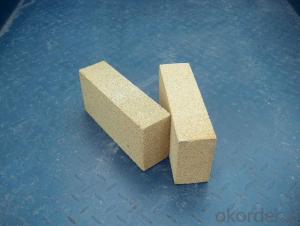Foam boards have become a staple in modern construction, offering a versatile and efficient solution for various applications. From insulation to structural support, these boards have proven their worth time and time again. Let’s dive into the world of foam boards and explore their benefits, applications, and the modern approach to using them in construction projects.
The Versatility of Foam Boards
Foam boards are made from expanded polystyrene (EPS), a lightweight material that is easy to work with. Their versatility is one of the main reasons they are so popular in the construction industry. They can be cut, shaped, and molded to fit any design requirement, making them ideal for custom projects. Whether you’re building a house, a commercial space, or even an art installation, foam boards can be tailored to your needs.
Insulation and Energy Efficiency
One of the primary uses of foam boards in construction is for insulation. They provide excellent thermal resistance, helping to keep buildings warm in the winter and cool in the summer. This not only improves the comfort of the occupants but also reduces energy consumption, leading to lower utility bills and a smaller carbon footprint. By using foam boards for insulation, you’re investing in a greener and more sustainable future.
Structural Support and Load Bearing
Foam boards are not just for insulation; they also offer structural support. They can be used as a base for concrete slabs, providing a stable and even surface. This is particularly useful in areas with uneven terrain or where a strong foundation is required. Additionally, foam boards can be used in load-bearing applications, such as supporting walls or roofs. Their strength-to-weight ratio makes them an ideal choice for these purposes.
Aesthetic Appeal
Don’t underestimate the aesthetic value of foam boards. They can be painted, covered with plaster, or even used as a base for other materials, allowing for a wide range of design possibilities. Whether you’re going for a modern, minimalist look or a more traditional style, foam boards can be adapted to suit your vision.
Innovations in Foam Board Technology
The construction industry is always evolving, and foam board technology is no exception. New advancements are being made all the time, improving the durability, fire resistance, and environmental impact of these boards. For example, some manufacturers are now producing foam boards with a higher recycled content, reducing their overall environmental footprint.
Sustainability and the Environment
Sustainability is a key concern in today’s construction projects, and foam boards are playing their part. By providing excellent insulation, they help to reduce energy consumption and carbon emissions. Moreover, the use of recycled materials in their production contributes to a circular economy, minimizing waste and promoting the use of eco-friendly practices.
Cost-Effectiveness
Foam boards are not only beneficial from an environmental and aesthetic standpoint but also from a financial one. They are relatively inexpensive compared to other construction materials, making them an attractive option for budget-conscious projects. Their ease of installation also contributes to cost savings, as it reduces the time and labor required for construction.
Safety and Fire Resistance
Safety is paramount in construction, and foam boards have been tested and proven to meet fire safety standards. They are designed to resist fire and slow its spread, providing an additional layer of protection for buildings and their occupants.
Modern Approach to Foam Boards
The modern approach to using foam boards in construction involves a combination of traditional techniques and innovative applications. Designers and builders are pushing the boundaries of what’s possible with these materials, exploring new ways to incorporate them into projects for both functional and aesthetic purposes.
Case Studies and Real-World Applications
To truly understand the impact of foam boards in construction, it’s helpful to look at real-world examples. Case studies of successful projects that have utilized foam boards can provide valuable insights into their benefits and applications. From residential homes to commercial buildings, foam boards have been used in a variety of contexts, showcasing their versatility and effectiveness.
The Future of Foam Boards in Construction
As the construction industry continues to evolve, it’s likely that foam boards will remain a popular choice for builders and designers alike. With ongoing advancements in technology and a growing emphasis on sustainability, the future of foam boards looks bright. They will continue to play a crucial role in shaping the built environment of tomorrow.
In conclusion, foam boards are a multifaceted and indispensable tool in the modern construction toolkit. Their versatility, insulation properties, structural support, aesthetic appeal, and commitment to sustainability make them an attractive option for a wide range of projects. As we look to the future, it’s clear that foam boards will continue to be a key component in the construction of a more sustainable and efficient world.

